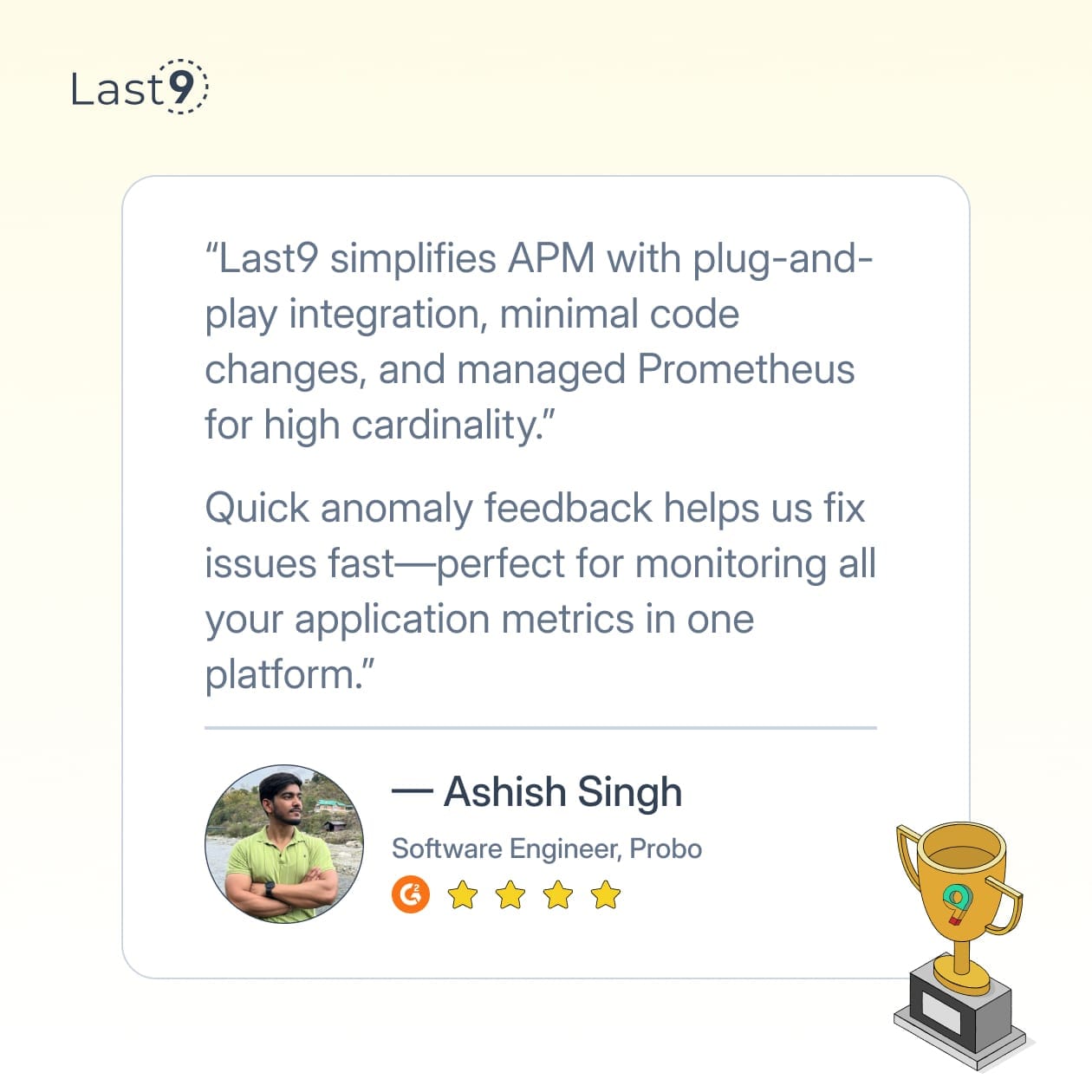In a distributed system, things break in unexpected ways. That’s why observability isn’t optional—it’s how you understand what’s going on under the hood.
If you’re comparing tools to instrument your services, OpenTelemetry and Micrometer are two names you’ll run into. Both are used to collect metrics, but they take very different approaches—especially when it comes to flexibility, vendor support, and what you can do with the data.
This post walks through those differences so you can pick what works best for your architecture and team.
Understanding the Basics
Before we compare the two, it helps to understand what each tool is built to do.
OpenTelemetry: Metrics, Logs, and Traces—All in One
OpenTelemetry (OTel) is an open-source framework for collecting telemetry data. It supports metrics, traces, and logs through a single API. Backed by the CNCF, it was created by merging two earlier projects—OpenTracing and OpenCensus—and has quickly become a go-to choice for observability in cloud-native systems.
What makes OpenTelemetry different is its wide scope. It works across languages like Java, Go, Python, and more, and is designed to give you consistent instrumentation across services, regardless of your stack or backend.
Micrometer: A Java-First Metrics Library
Micrometer is focused specifically on metrics — and specifically for Java. It gives you a simple, consistent API to collect metrics and send them to systems like Prometheus, Datadog, or CloudWatch. No need to change your instrumentation if you switch vendors.
Unlike OpenTelemetry, Micrometer doesn’t handle traces or logs. It’s a metrics-only tool, but it does that job well — especially in Spring-based applications, where it’s tightly integrated.
Key Differences Between OpenTelemetry and Micrometer
Once you understand what each tool is built for, the differences start to stand out, especially when you look at scope, language support, and where each one came from.
Scope and Coverage
OpenTelemetry is built to cover all three pillars of observability—metrics, traces, and logs.
- Offers a single, unified API for all telemetry types
- Works across multiple languages: Java, Go, Python, JavaScript, .NET, and more
- Suitable for teams working in polyglot environments or managing services across different stacks
This makes it a strong choice if you're looking for consistency across distributed systems, regardless of what language each service is written in.
Micrometer takes a more focused approach.
- Originally built for metrics in Java applications
- Still best known for its tight integration with Spring Boot and the broader JVM ecosystem
- Now includes Micrometer Tracing and the Observation API for basic trace support
Even with these additions, Micrometer remains most effective in Java-first setups—especially where metrics are the main priority.
Historical Context
OpenTelemetry was launched in 2019 by combining two earlier efforts: OpenCensus (from Google) and OpenTracing (from CNCF). These projects were solving similar problems in slightly different ways, so merging them helped reduce confusion and create a single standard for collecting telemetry data.
Today, OpenTelemetry is maintained by the CNCF and widely supported by the observability ecosystem.
Micrometer was created to fix gaps in the Spring Boot monitoring experience. Spring Boot 1.x used Dropwizard Metrics, which didn’t support dimensional metrics or allow flexible backend integrations. Micrometer filled that gap and became the default metrics library in Spring Boot 2.0.
Its design made it easier to collect structured metrics and push them to multiple monitoring systems, like Prometheus, Datadog, or CloudWatch, without rewriting instrumentation code.
How They Fit Into Your Frameworks
Framework support can make or break the observability experience—especially when you're trying to get up and running quickly.
OpenTelemetry
OpenTelemetry provides instrumentation for a wide range of frameworks and libraries across multiple languages:
- HTTP clients like
requests(Python),net/http(Go), andHttpClient(Java) - ORMs, message brokers, and database drivers
- Web frameworks like Express (Node.js), Django (Python), and Spring (Java)
That said, support varies across ecosystems.
- In some languages, setup is automatic with solid defaults
- In others, you may need to write custom spans or handle context propagation manually
This flexibility is great, but it can require more effort depending on your tech stack.
Micrometer
Micrometer is built for Java, and it integrates tightly with Spring Boot:
- Default metrics library in Spring Boot since version 2.0
- Works out of the box with Spring components like
@Scheduled,RestTemplate, andWebClient - Integrates with Spring Boot Actuator to expose JVM, system, and custom application metrics
If you're in a Spring-based environment, Micrometer feels native. You get useful metrics automatically, without much setup or wiring.
Here's How Integration Looks with Spring Boot
A lot of developers discover OpenTelemetry and Micrometer through Spring Boot. If that’s your setup, here’s a quick look at how both frameworks integrate with it.
OpenTelemetry in Spring Boot
You can integrate OpenTelemetry using the opentelemetry-spring-boot-starter. Once you add the relevant dependencies and set a few properties, Spring Boot auto-instruments your app, capturing things like HTTP requests, database calls, and more.
<!-- OpenTelemetry Starter -->
<dependency>
<groupId>io.opentelemetry.instrumentation</groupId>
<artifactId>opentelemetry-spring-boot-starter</artifactId>
<version>1.28.0</version>
</dependency>otel.traces.exporter=otlp
otel.exporter.otlp.endpoint=http://collector:4317This makes it easy to plug OpenTelemetry into your existing setup without major changes.
Micrometer in Spring Boot
Micrometer is built into Spring Boot (since 2.0). If you’re using Spring Boot Actuator, you’re already using Micrometer. To expose metrics via Prometheus, just add the registry:
<dependency>
<groupId>io.micrometer</groupId>
<artifactId>micrometer-registry-prometheus</artifactId>
</dependency>Enable the Prometheus endpoint:
management.endpoints.web.exposure.include=metrics,prometheus
management.metrics.export.prometheus.enabled=trueFor custom metrics, use the MeterRegistry:
meterRegistry.counter("api.requests").increment();Micrometer gives you JVM, system, and HTTP metrics out of the box—no extra setup needed.
Unified vs. Modular: Architecture of OpenTelemetry and Micrometer
OpenTelemetry and Micrometer take different architectural approaches to observability, and that difference shows up in how they handle telemetry data and instrumentation.
OpenTelemetry: Unified Data Across Signals
OpenTelemetry is built around a unified data model that ties together metrics, traces, and logs. This makes it easier to correlate data from different sources and understand how requests move across services. It’s especially helpful in distributed systems where issues can span multiple components.
The model is language-agnostic and consistent across environments. Whether you're working in Java, Go, or Python, you get the same concepts and structure—which simplifies cross-service observability in polyglot stacks.
Micrometer: Metrics-Centric by Design
Micrometer was designed specifically for metrics. It supports counters, gauges, timers, and distribution summaries using a dimensional data model (labels/tags). The focus is on producing clean, structured metrics that work well with time-series backends like Prometheus or Datadog.
While Micrometer now supports tracing via Micrometer Tracing and the Observation API, that part is still evolving. The architecture remains more modular, and the core focus is still squarely on metrics.
Instrumentation: Auto vs Manual
OpenTelemetry supports auto-instrumentation for many popular libraries and frameworks. That means you can capture telemetry with little to no code changes—great for adding observability to existing services without a major refactor. Manual instrumentation is still available for more custom cases, giving you flexibility when needed.
Micrometer usually requires you to instrument your code manually. You create and register metrics explicitly using the Micrometer API. This gives you fine-grained control but means more setup, especially if you're building from scratch.

Performance at Scale: Which Tool Fits Your System?
Performance might not be the first thing you think about when choosing an observability tool, but it does matter, especially in systems that handle a lot of traffic or generate a high volume of telemetry data.
Memory Efficiency
OpenTelemetry has made noticeable improvements in memory usage. Some recent benchmarks report between 22% to nearly 100% lower memory allocations compared to older or less optimized telemetry libraries. These gains come from improvements in how instrumentation is handled and how data is buffered and processed behind the scenes.
Micrometer is also memory-efficient, especially in Java environments. It was built for lightweight metrics collection and integrates well with Java’s memory model. That said, it may not include some of the newer optimizations that OpenTelemetry brings for high-scale or multi-language systems.
Throughput and Scalability
OpenTelemetry is built with scalability in mind. It uses asynchronous processing to handle large volumes of telemetry data without blocking application threads. This makes it a strong choice in environments with multiple services, especially when they're written in different languages.
Micrometer performs extremely well in Java applications, especially Spring Boot. It’s fast, efficient, and fits naturally into Java workloads. But because it focuses only on metrics—and only in Java—it's not ideal for environments that require trace correlation or span context across services written in different languages.
Practical Takeaway
In most typical use cases, both tools offer good performance. The differences usually show up at scale or in more complex setups. If you’re operating a large, language-diverse system with high throughput requirements, OpenTelemetry offers more flexibility. If you're running a Spring-based Java stack and need simple, reliable metrics, Micrometer is hard to beat.
A Quick Comparison: OpenTelemetry vs. Micrometer
| Feature | OpenTelemetry | Micrometer |
|---|---|---|
| Primary Focus | Complete observability (traces, metrics, logs) | Metrics collection (with tracing added via Micrometer Tracing) |
| Language Support | Multi-language (Java, Python, Go, JS, etc.) | Java only |
| Spring Boot Integration | Available via starter | Default metrics library since Spring Boot 2.0 |
| Auto-instrumentation | Strong support | Limited to what Spring Boot provides |
| Learning Curve | Steeper due to broader scope | Gentler for Java/Spring developers |
| Community Adoption | Rapidly growing CNCF project | Well-established in the Java ecosystem |
| Best Use Case | Polyglot microservices environments | Java applications, especially Spring-based |
When to Use Both Together
Interestingly, OpenTelemetry and Micrometer can complement each other in certain scenarios. For example:
- You can use Micrometer for metrics in your Java applications while adopting OpenTelemetry for tracing across your entire system
- Micrometer can export metrics in OpenTelemetry format, allowing you to use OpenTelemetry as a transport layer
- In transitional architectures, you might use Micrometer for existing Java services and OpenTelemetry for new services in other languages.
Bringing It All Together with Last9
Instrumentation is just one piece of observability. Once you're collecting telemetry through OpenTelemetry, Micrometer, or both, you still need a system to store, query, and make sense of that data. Last9 helps you do exactly that.
We're a managed observability platform that works with both frameworks. You can send metrics, traces, and logs without worrying about scale or exploding costs. High-cardinality data isn’t a problem here. Want to track metrics per user or tenant? Last9 is built to handle that kind of detail without falling over.
Here’s what makes our platform useful in production setups:
- Efficient handling of high-cardinality metrics
- One place to view metrics, traces, and logs together
- Native support for OpenTelemetry and Prometheus (which Micrometer uses)
- Pricing that doesn’t surprise you with per-host or per-user fees
Teams at companies like Probo, CleverTap, and Replit rely on Last9 to monitor their systems closely while keeping overhead low. Talk to us to know more about the platform capabilities!
FAQs
Can OpenTelemetry and Micrometer work together?
Yes, they can! Micrometer provides integration with OpenTelemetry through the Micrometer-OpenTelemetry bridge, allowing you to use Micrometer's API while exporting data in OpenTelemetry format. This approach lets you leverage Micrometer's deep Java integration while benefiting from OpenTelemetry's broader observability capabilities.
Several projects now support both frameworks side-by-side. For example, Quarkus offers a micrometer-opentelemetry extension that allows the normal use of the Micrometer API while having metrics handled by the OpenTelemetry extension.
Is OpenTelemetry replacing Micrometer?
Not necessarily. While OpenTelemetry is gaining traction as a universal standard, Micrometer continues to be highly valued in the Java ecosystem, particularly with Spring applications. They can coexist and even complement each other.
How mature are these frameworks?
Micrometer has been stable and production-ready for Java applications for several years. OpenTelemetry's stability varies by language implementation, but its Java, Go, and Python implementations are considered production-ready for metrics and tracing.
What about performance overhead?
Both frameworks are designed to minimize overhead, but the impact depends on your specific instrumentation. In general, both can be configured to have minimal performance impact while providing valuable insights.
Do I need to modify my code to use these frameworks?
Both frameworks require some level of instrumentation, but they also offer auto-instrumentation capabilities that can reduce the need for manual code changes. OpenTelemetry has been focusing heavily on zero-code instrumentation options.
How do OpenTelemetry and Micrometer handle data privacy and security?
Both frameworks provide mechanisms for managing sensitive data:
- OpenTelemetry offers configuration options to redact or obfuscate sensitive information in traces and logs. It also supports secure transmission of telemetry data through encrypted protocols.
- Micrometer allows for fine-grained control over what metrics are collected and exported, enabling you to exclude sensitive data from your metrics.
In both cases, it's crucial to carefully configure your observability pipeline to ensure compliance with data privacy regulations and security best practices.
What are the main challenges when migrating from Micrometer to OpenTelemetry?
The main challenges include:
- Mapping existing Micrometer metrics to OpenTelemetry equivalents
- Updating monitoring dashboards and alerts to use the new data format
- Retraining team members on the new tooling and concepts
- Ensuring consistent historical data across the transition period
A gradual migration approach, where both systems run in parallel for a time, can help mitigate these challenges.



